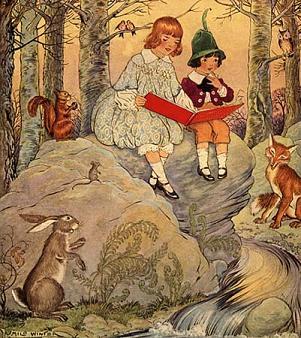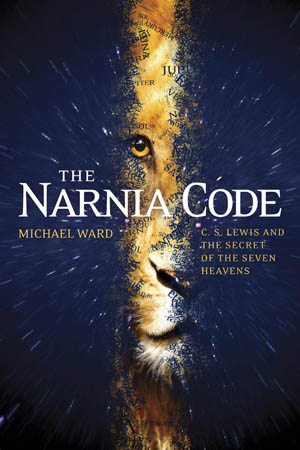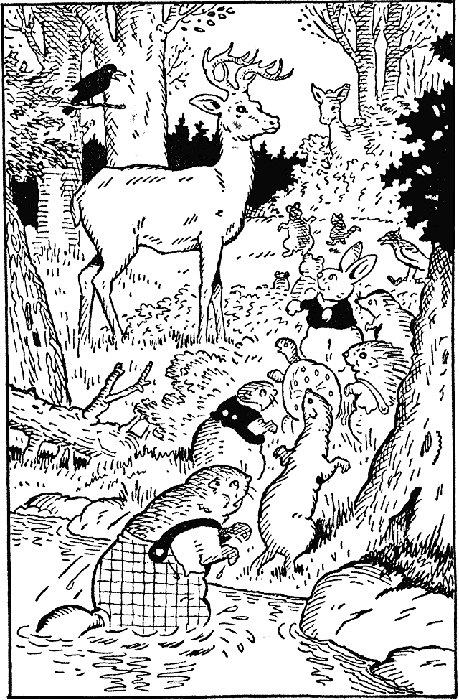The Narnia Code
Recently, I enrolled in the Hillsdale College course on C.S. Lewis. Having breathed Lewis’s interplanetary trilogy (especially That Hideous Strength) almost continuously for the last year, the chance to hear some expert discussion of this author was irresistible. Michael Ward delivered several compelling lectures, and when I learned of his thesis that medieval cosmology provided an underlying key to the Narnia chronicles, I wanted to learn more.
The Narnia Code is a briefer version of Ward’s more scholarly work Planet Narnia: The Seven Heavens of the Imagination of C.S. Lewis. In it, Ward presents a convincing case for Lewis’s conscious use of the planetary personae of ancient cosmology to establish the atmosphere of the chronicles. Each book, Ward argues, develops its fictional world according to the traits of one distinct personality: Jupiter, Mars, Sol, Luna, and so on.
The thesis helps to explain some aspects of the novels that readers may have found puzzling, such as Father Christmas’s appearance in The Lion, the Witch and the Wardrobe, or the extensive section on Bacchus in Prince Caspian. While it’s been alleged that Lewis was careless in his construction because these are “mere” books for children, such an explanation has never been very satisfactory given his careful attention to detail virtually everywhere else in his writing, and also given his deep respect for children and children’s stories.
Ward’s argument emphasizes Lewis’s distinguished career as a medievalist, the immersion of his imagination in the medieval worldview as evidenced in books like The Discarded Image, his lifelong interest in astronomy, and many references to the planetary intelligences in his letters, academic writing, poetry, and other work. As readers of Ward’s book have marveled, once he walks us through each of the chronicles’ imagery, language, themes and action, it’s quite hard to miss.
Ward’s explication of the chronicles is valuable to exonerate Lewis from the charge of haphazard writing; it reveals a level of conscious craftsmanship that should help to raise the stories’ stature as literary works. But it also raises new questions for me. Lewis was open about his desire to embody theology in these tales; why did he never reveal this other organizing principle he had in mind? Ward shows that Lewis had a love for secret codes, but to never reveal the secret changes something in the relationship between reader and writer.
In The Magician’s Book, Laura Miller explains that she felt betrayed upon learning, after wholeheartedly embracing the imaginative vision of the chronicles as a child, that Lewis had intentionally used them to depict Christian themes. She felt Lewis had pulled a fast one. While I understood her feeling, it seemed to me that as long as Lewis was open about his literary intentions, he couldn’t really be accused of deception. But the “Narnia Code” is different, somehow. It feels more like a joke played on the reader than a joke shared with the reader — not a malicious one, but still somehow out of step with Lewis’s openness about the other “agenda” of the tales.
More importantly, I find myself asking: does the planetary schema of the novels add significantly to their meaning? Is my understanding of some of the deepest and most moving truths of the books enriched by comparing the fictional atmosphere to Jove or Saturn or Mercury? In that sense, I would say that while I found what I learned in The Narnia Code to be interesting, erudite, and convincingly argued, it is not indispensable. One can have a fully immersive imaginative and spiritual experience in Narnia without knowing about Lewis’s possible underlying cosmological project. I say this, I’m ashamed to say, as someone who read the books when I was around 11 without any clue of their more apparent Christianity.
Not until my friend Christina matter-of-factly mentioned that they were allegorical did I get a glimpse of why I wept when Aslan died, or why his creation of Narnia was and remains one of the most beautiful imaginative visions I’ve ever read. I knew nothing of medieval cosmology, but I did know the Christian story of creation, fall, and redemption, and I believe my strong response came in part from the correspondence between these obvious pieces of the Narnia story and the faith I had been taught and had received. And though I wasn’t the brightest bulb in the literary interpretation realm, I think that if left to myself, I would have become aware of the Christian correlations eventually. I’ve always felt that my first experience with the books is what Lewis would have wanted. For a child to experience Narnia from inside, then later to find its imaginative truths have spiritual counterparts, seems to me be the best way for a literary work to prove its worth.
The difficulty with medieval cosmology as a counterpart to the more accessible elements in the story is that it can make its appeal naturally only to experts. That is, while scenes from Narnia have often come to mind when I’m thinking about some spiritual phenomenon, it seems to me quite unlikely that, say, Jove would occur to me when contemplating joy, or Saturn when contemplating death; nor is it likely that I would recognize attributes of these personae in the atmosphere and imagery of the stories, and relate them to the character of God. Not being a medievalist, my mind isn’t populated with those characters. Maybe that’s partly why Lewis wasn’t forthcoming about his experiment — not so much because he was making a private joke at the expense of his readers, but because he had set himself a challenge that he didn’t expect his readers would necessarily relate to or care about.
In any case, The Narnia Code is an intriguing read for anyone interested in learning about Lewis and his worlds — fictional and academic. While it didn’t significantly enrich the meanings of the Narnia chronicles for me, it does provide an explanation for some of the jarring elements in the stories. And as a fan of Lewis’s Ransom trilogy, I expect to revisit this book to illuminate that series’ more direct engagement of medieval planetary influence.





